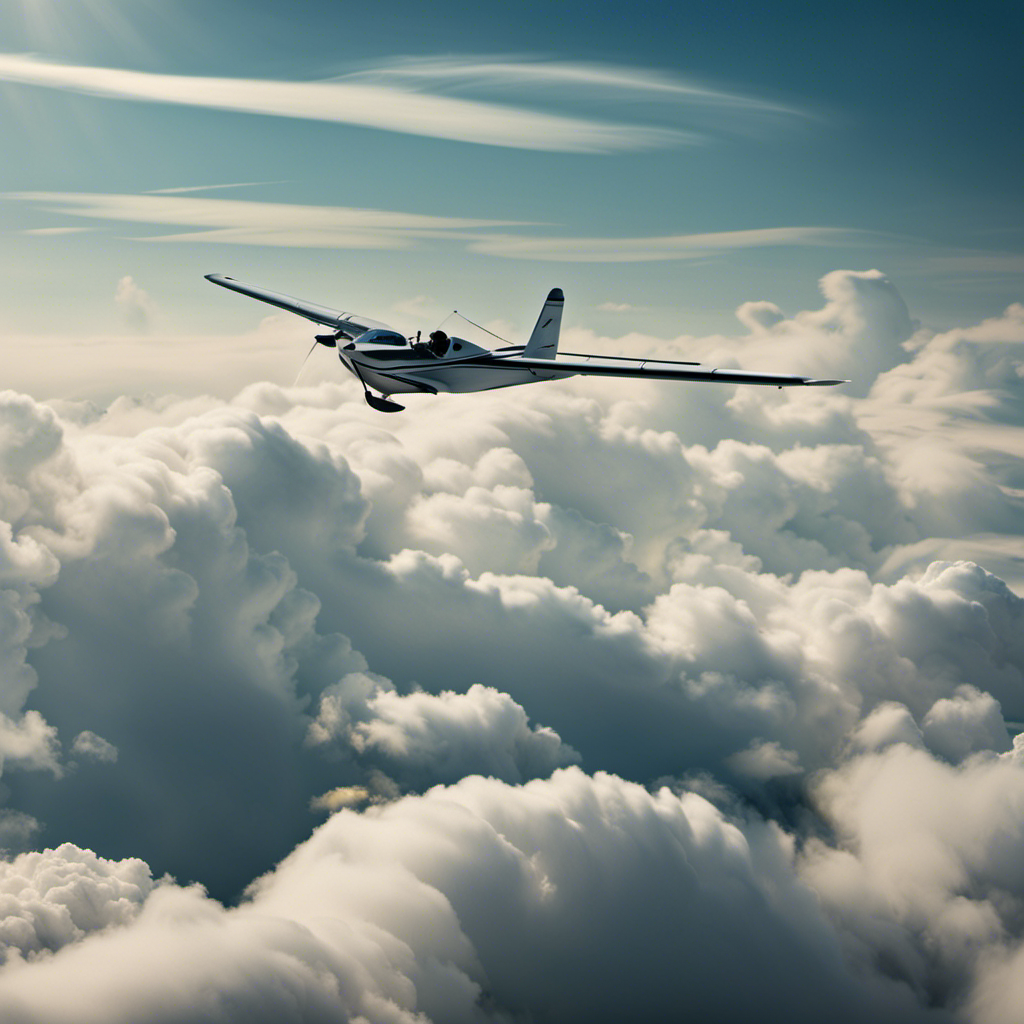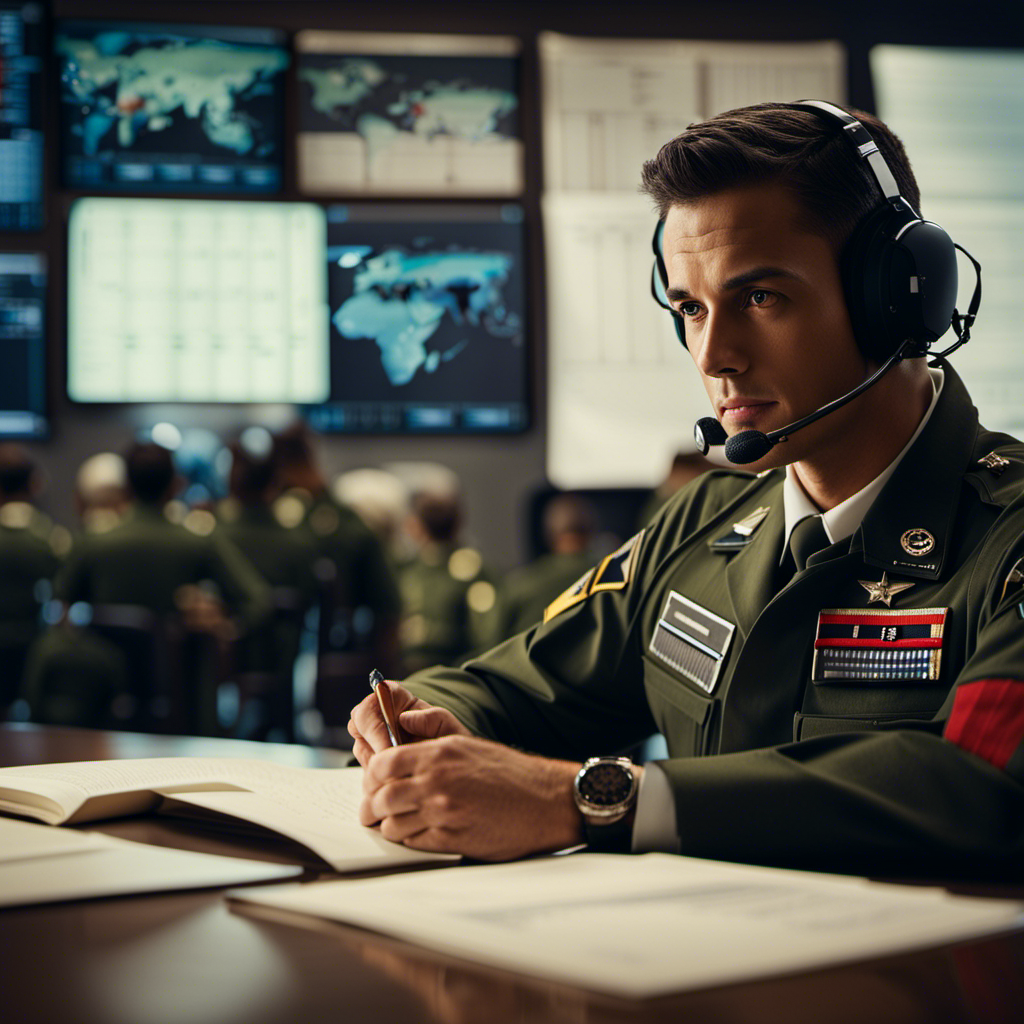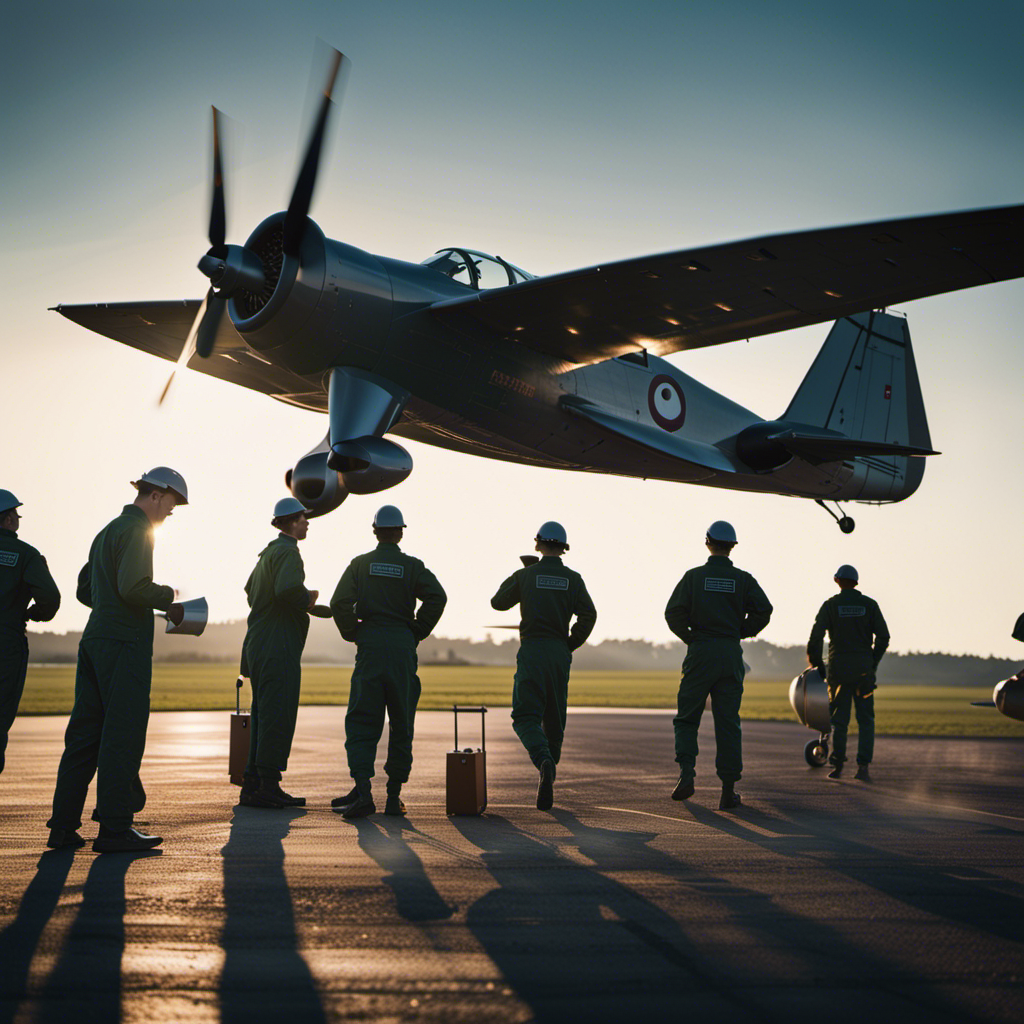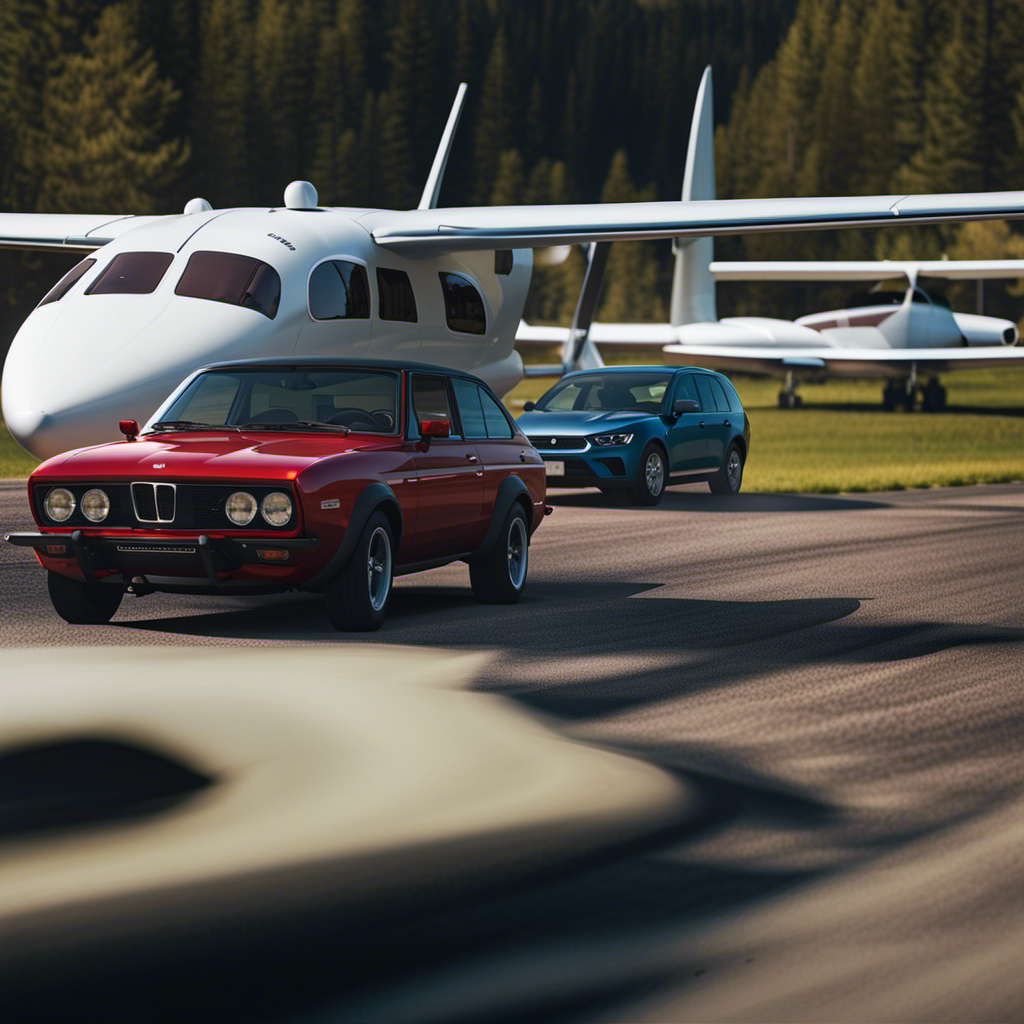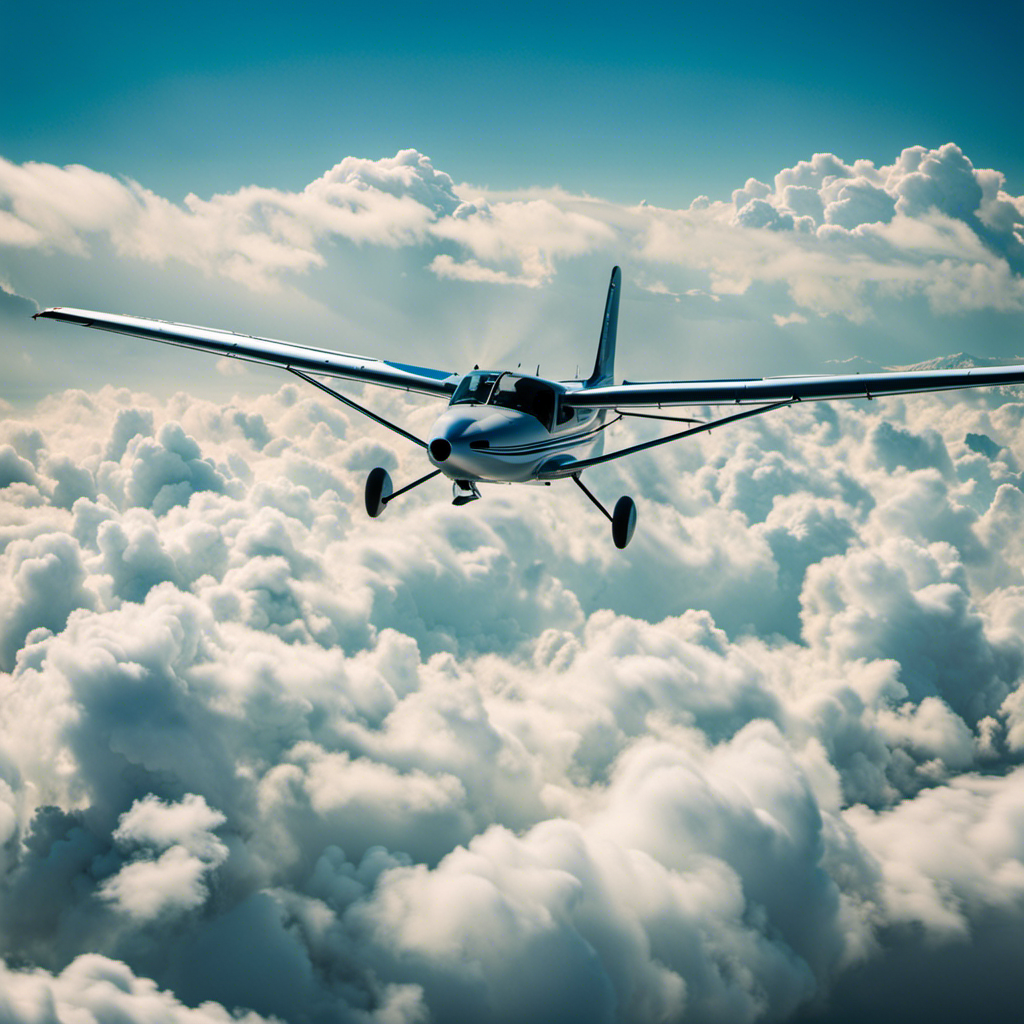Aspiring to become a glider pilot has always fascinated me due to the grace and precision required to sail through the skies. The question that lingers is: how does one acquire the skills to navigate these magnificent aircraft?
In this article, we will explore the training required to pilot a glider plane. From understanding the basics of aviation to obtaining a student pilot license, embarking on this journey requires dedication, knowledge, and a passion for the thrill of flight.
So, let’s dive in and uncover the path to becoming a glider pilot.
Key Takeaways
- Weather conditions, including wind speed, direction, and temperature variations, significantly impact glider flying, lift, and stability.
- Enrolling in an accredited glider pilot training program with a comprehensive curriculum is crucial for gaining knowledge in aerodynamics, controls, weather, navigation, and emergencies.
- Obtaining a student pilot license requires meeting certain requirements, such as a minimum age of 14, passing a medical examination, and passing a written knowledge test.
- Learning to fly solo and building flight experience involves gradually increasing independence, mastering advanced maneuvers, developing decision-making skills, and gaining practical experience in various weather conditions and environments.
Understanding the Basics of Aviation
Understanding the basics of aviation is crucial for aspiring glider pilots. As a glider pilot, I have learned that one of the most important factors to consider before taking off is the weather conditions. Weather plays a significant role in glider flying, as it affects the lift and stability of the aircraft. It is essential to be aware of factors such as wind speed, direction, and temperature variations, which can impact the glider’s performance.
Additionally, having a solid understanding of aerodynamics and the principles of flight is paramount. Gliders rely solely on the forces of lift and gravity to stay airborne. By manipulating the glider’s control surfaces, such as the ailerons, elevator, and rudder, a pilot can control the aircraft’s movement. Knowledge of how these control surfaces interact with the airflow around the glider is essential for safe and effective flying.
By grasping the importance of weather conditions and mastering the principles of aerodynamics and flight, aspiring glider pilots can ensure a solid foundation in aviation. This knowledge will enable them to make informed decisions while flying and enhance their overall flying experience.
With this understanding in place, the next logical step is to enroll in a glider pilot training program, which will provide further guidance and practical experience in flying gliders.
Enroll in a Glider Pilot Training Program
To enroll in a glider pilot training program, you’ll want to research and find a reputable organization that offers comprehensive instruction. It is important to enroll in a certification program that meets the standards set by the aviation regulatory bodies. Finding a qualified instructor is crucial as they will guide you through the training process and ensure you acquire the necessary skills.
| Key Factors | Considerations |
|---|---|
| Accreditation | Ensure the organization is accredited by the relevant aviation authority. This ensures that the training program meets the required standards. |
| Curriculum | Look for a program that covers all the essential topics, including aerodynamics, flight controls, weather, navigation, and emergency procedures. |
| Practical Training | The program should provide ample opportunities for hands-on experience, including flight simulations and actual flights under the supervision of an instructor. |
| Safety Measures | Ensure that the training program emphasizes safety and adheres to strict operational procedures to protect both the student and the aircraft. |
Obtain a Student Pilot License
Once you’ve completed the glider pilot training program, you’ll be eligible to obtain a student pilot license, which allows you to fly solo with certain restrictions. To obtain a student pilot license, you must meet certain requirements set by the aviation authorities.
Firstly, you must be at least 14 years old. Secondly, you need to pass a medical examination conducted by an aviation medical examiner to ensure that you are physically fit to fly. Additionally, you must pass a written knowledge test that covers topics such as aviation regulations, aerodynamics, and weather.
To obtain your student pilot license, you’ll need to find a flight instructor who is authorized to train glider pilots. Your flight instructor will guide you through the practical flight training and help you develop the necessary skills to fly a glider safely. They will teach you the proper procedures for takeoffs, landings, and emergency situations. They will also evaluate your progress and determine when you are ready to fly solo.
Once you have obtained your student pilot license, you can begin the exciting journey of learning to fly solo. With your flight instructor’s guidance, you will gradually gain more independence in the cockpit and learn to make decisions on your own. This stage of training will further refine your piloting skills and prepare you for the challenges that lie ahead.
Learn to Fly Solo
When you’ve earned your student pilot license, your flight instructor will gradually give you more independence in the cockpit as you learn to fly solo. This is an exciting milestone in your training, as it allows you to put into practice the skills you have learned so far.
During this phase, you will continue to refine your flying abilities and develop your decision-making skills.
To help you enjoy this phase of your training, here are five key aspects to focus on:
-
Mastering advanced maneuvers: As you gain more experience, your flight instructor will introduce you to advanced maneuvers such as stalls, spins, and steep turns. These maneuvers will enhance your understanding of the aircraft’s capabilities and improve your overall control.
-
Building confidence: Flying solo can be a nerve-wracking experience at first, but it’s an essential step towards becoming a competent pilot. By gradually increasing your solo flights, you will build confidence in your abilities and become more comfortable handling the aircraft independently.
-
Developing decision-making skills: Flying solo requires you to make decisions on your own, such as selecting appropriate routes, managing weather conditions, and ensuring the safety of your flight. This phase of training is crucial for developing good judgment and decision-making skills.
-
Practicing emergency procedures: Your flight instructor will continue to train you on various emergency scenarios, such as engine failures or forced landings. By practicing these procedures, you will be better prepared to handle unexpected situations if they arise during your solo flights.
-
Gaining experience in different conditions: As you progress, your flight instructor may encourage you to fly in different weather conditions and at various times of the day. This exposure will broaden your experience and help you become a well-rounded pilot.
As you gain more confidence and experience flying solo, you will be ready to transition into the next phase of your training: building flight experience. This is an important step towards becoming a proficient glider pilot.
Build Flight Experience
To build flight experience, it’s important to seek opportunities that allow me to fly in different environments and weather conditions. Building flight hours and gaining practical experience are crucial steps in becoming a proficient glider pilot.
One way to accomplish this is by participating in cross-country flights. These flights involve planning and executing longer distances, allowing me to navigate through various terrains and weather patterns. This not only enhances my navigation skills but also exposes me to different flying conditions, such as thermals and ridge lift.
Additionally, seeking opportunities to fly in different types of gliders can broaden my experience. Each glider has its own unique characteristics and handling qualities, so flying different models helps me develop a versatile skill set.
Furthermore, participating in aerobatic training can provide valuable experience in handling the aircraft in extreme flight conditions. Aerobatic maneuvers require precise control and coordination, enhancing my overall flying abilities.
Additionally, flying in different airspaces, such as controlled airports or glider-only fields, will expose me to different rules and procedures, improving my situational awareness and communication skills.
Pass the Glider Pilot License Exam
Ensure that you study thoroughly and practice consistently in order to pass the glider pilot license exam. Preparing for the written exam is crucial to your success as a glider pilot.
You will need to study various topics such as aerodynamics, weather, navigation, and airspace regulations. Familiarize yourself with the Federal Aviation Administration (FAA) regulations and the Glider Flying Handbook. These resources will provide you with the necessary knowledge to answer the exam questions accurately.
In addition to studying, it is important to choose the right glider for your training. The glider you select should be appropriate for your skill level and training objectives. Consider factors such as wing loading, performance characteristics, and safety features. Seek guidance from experienced glider pilots or instructors who can provide recommendations based on your individual needs.
Once you have successfully passed the glider pilot license exam, you can then move on to receive endorsements and ratings that will allow you to fly specific types of gliders or perform advanced maneuvers. This next phase of your training will further enhance your skills and expand your capabilities as a glider pilot.
Receive Endorsements and Ratings
After successfully passing the Glider Pilot License Exam, the next step in becoming a proficient glider pilot is to receive endorsements and ratings. These endorsements and ratings are essential for expanding your flying abilities and gaining experience in different aspects of glider flying.
To navigate through the endorsement process and meet the ratings requirements, consider the following:
-
Solo Endorsement: This endorsement grants you the privilege to fly a glider solo, without the presence of an instructor.
-
Cross-Country Endorsement: With this endorsement, you can embark on cross-country flights, allowing you to explore new destinations and hone your navigational skills.
-
Aerobatic Endorsement: If you’re interested in performing thrilling aerobatic maneuvers, this endorsement will give you the necessary training and authorization.
-
Instructor Rating: Becoming a glider flight instructor requires an additional rating. This allows you to share your knowledge and skills with aspiring glider pilots.
-
Commercial Rating: Attaining a commercial rating enables you to fly gliders for compensation, opening up opportunities for professional flying careers.
These endorsements and ratings are obtained through comprehensive training programs and practical assessments. By fulfilling the specific requirements and demonstrating proficiency in each area, you’ll enhance your capabilities as a glider pilot.
Now equipped with the necessary endorsements and ratings, you are ready to participate in glider competitions and events, showcasing your skills and challenging yourself in the thrilling world of competitive glider flying.
Participate in Glider Competitions and Events
When it comes to participating in glider competitions and events, there are a few key points to consider.
First, these events provide an excellent opportunity to put your skills to the test in competitive flying. Whether it’s racing against other pilots or demonstrating your precision in aerobatics, these competitions challenge and push you to become a better pilot.
Additionally, attending glider rallies and gatherings allows you to network with other pilots, exchanging knowledge, experiences, and building connections within the gliding community. These events offer a unique platform to learn from experienced pilots, share insights, and foster a sense of camaraderie among fellow glider enthusiasts.
Test your skills in competitive flying
Now you can put your skills to the test and compete in the world of glider flying. Competitive flying is an exciting way to showcase your abilities and push yourself to new heights. To excel in this arena, you will need to develop advanced glider techniques and hone your competitive flying skills.
Competitive flying requires a deep understanding of glider aerodynamics and the ability to make precise and strategic decisions in the air. You must master techniques like thermalling, where you use rising columns of warm air to gain altitude, and ridge soaring, where you take advantage of wind deflected by a slope to stay aloft.
By participating in glider competitions and events, you will have the opportunity to compare your skills with other pilots and learn from their experiences. Attending glider rallies and gatherings is a fantastic way to network with fellow aviators and expand your knowledge of the sport.
Transitioning into the subsequent section about attending glider rallies and gatherings to network with other pilots, you can meet like-minded individuals who share your passion for glider flying and exchange valuable insights and tips.
Attend glider rallies and gatherings to network with other pilots
Attending glider rallies and gatherings is a great way to connect with fellow pilots and expand your knowledge of the sport. These events provide excellent networking opportunities and a platform for sharing experiences. When pilots come together, they can exchange valuable information about flying techniques, maintenance tips, and the latest advancements in glider technology.
It’s a chance to learn from others who have faced similar challenges and to gain insights that can enhance your own flying skills. Additionally, glider rallies often include workshops and seminars by experienced pilots and industry experts, offering a deeper understanding of various aspects of glider aviation.
Stay Current and Continuously Improve
To stay current and continuously improve as a glider pilot, it’s important to actively seek out opportunities for ongoing training and education. Glider flying is a complex and dynamic activity that requires continuous learning and skills improvement.
One way to achieve this is by participating in advanced training courses offered by glider clubs or flight schools. These courses cover a wide range of topics, including advanced flying techniques, navigation, meteorology, and emergency procedures. By enrolling in these courses, pilots can enhance their knowledge and skills, allowing them to handle challenging situations with confidence.
Additionally, attending glider competitions and seminars can also contribute to ongoing learning and improvement. These events provide a platform for pilots to interact with experienced glider pilots and exchange knowledge and experiences. Participating in competitions allows pilots to push their limits and learn from both their successes and failures. Furthermore, attending seminars and workshops conducted by industry experts can provide valuable insights into the latest developments in glider technology and flying techniques.
Embrace a Lifelong Passion for Glider Flying
Joining glider clubs and communities is a great way to immerse yourself in the world of glider flying. Not only will you have access to experienced pilots who can offer guidance and support, but you’ll also have the opportunity to participate in group activities and events.
Additionally, sharing your love for glider flying with others can be incredibly rewarding, as it allows you to inspire and educate those who may be curious about the sport. Whether it’s through social media, public speaking engagements, or simply talking to friends and family, spreading the joy of glider flying can help grow the community and foster a lifelong passion for this exhilarating activity.
Join glider clubs and communities
If you want to become a glider pilot, you should consider getting involved in glider clubs and communities.
Joining glider clubs provides a multitude of networking opportunities and allows you to connect with experienced pilots who can offer guidance and support throughout your journey.
Participating in glider community events is also crucial as it not only helps you enhance your skills but also gives you the chance to socialize with other pilots.
Building relationships with fellow glider enthusiasts can provide valuable insights, advice, and even potential flying partnerships.
These clubs and communities often organize workshops, seminars, and competitions that broaden your knowledge and expose you to new techniques.
Share your love for glider flying with others
By sharing your love for glider flying with others, you can inspire them to embrace this exhilarating sport as well. Here are three reasons why sharing your experiences and connecting with fellow enthusiasts is so important:
-
Inspiration: When you share your experiences of glider flying, you can inspire others to try it for themselves. Your enthusiasm and passion can ignite a spark in them and motivate them to take up this thrilling activity.
-
Knowledge exchange: By connecting with other glider flying enthusiasts, you can learn from their experiences and gain valuable insights. They can provide tips, tricks, and advice that can enhance your skills as a pilot and make your flying experiences even better.
-
Community building: Sharing your love for glider flying helps build a strong and supportive community of like-minded individuals. It creates a sense of belonging and camaraderie, where you can bond over your shared passion and create lasting friendships.
Frequently Asked Questions
Are there any age restrictions for obtaining a student pilot license for glider flying?
There are age restrictions for obtaining a student pilot license for glider flying. The specific age requirements vary by country, but generally range from 14 to 16 years old.
How long does it typically take to complete a glider pilot training program?
On average, a glider pilot training program takes about 30-40 flight hours to complete, spread over several weeks or months. The glider pilot program duration depends on factors like weather conditions and the individual’s learning progress.
Can I use my student pilot license for glider flying in other countries?
Yes, you can use your student pilot license for glider flying in other countries. Glider pilot license reciprocity allows for international glider pilot training programs to recognize and accept your existing license.
Are there any physical fitness requirements for piloting a glider plane?
To ensure optimal performance and safety, piloting a glider plane requires meeting certain physical fitness requirements and considering one’s health. These factors are crucial for the demanding nature of glider flying.
What is the process for obtaining endorsements and ratings after receiving a glider pilot license?
To obtain glider endorsements, I must complete additional training and pass practical exams. There are different types of ratings for glider pilots, such as the Private Pilot Glider rating and the Commercial Pilot Glider rating.
Conclusion
In conclusion, piloting a glider plane requires a combination of dedication, training, and a deep love for soaring through the skies. It’s not just about learning the technicalities, but also about embracing the joy of flight.
From enrolling in a training program to obtaining a student pilot license and gaining experience through solo flights, every step is essential. And let’s not forget the thrill of participating in glider competitions and continuously improving your skills.
So, if you’re ready to embark on this lifelong passion, get ready to spread your wings and soar like a bird.
Happy gliding!
With a heart that soars as high as the skies, Aria, affectionately known as “Skylark,” is the driving force behind Soaring Skyways. Her journey into the gliding world began as a young dreamer gazing up at the soaring birds, yearning to experience the weightlessness and freedom they embodied. With years of experience both in the cockpit and behind the scenes, Aria’s commitment to the gliding community is unwavering.
